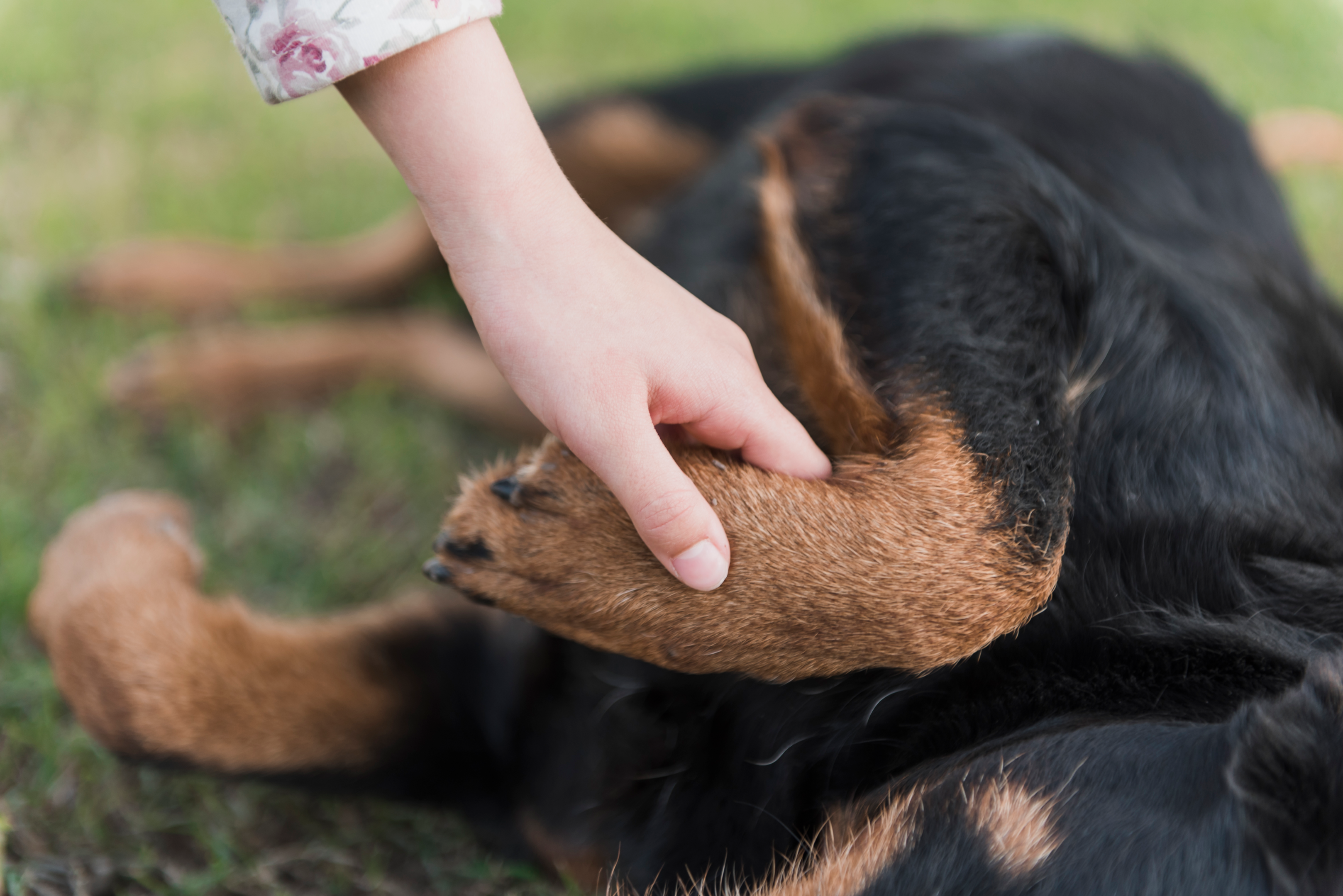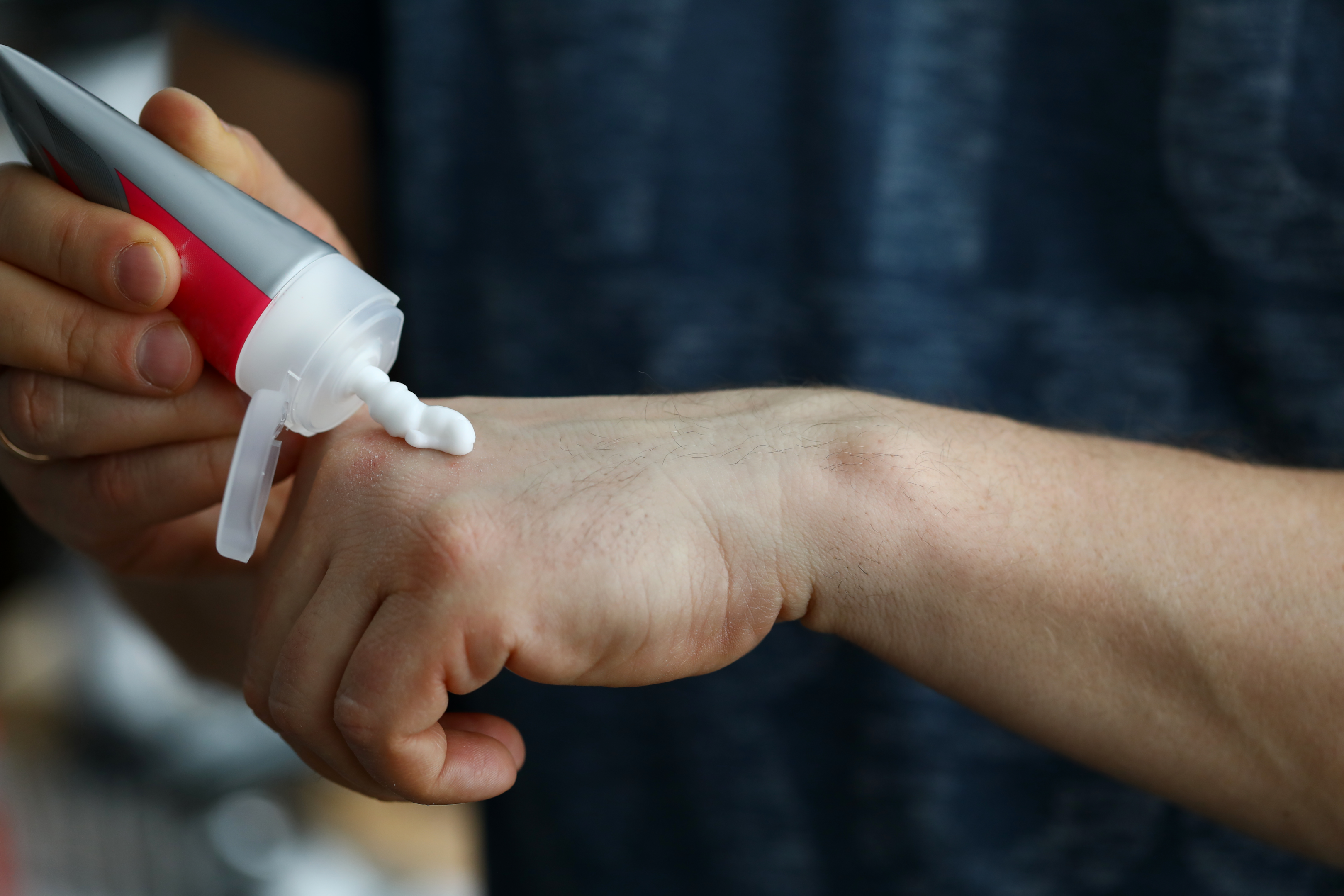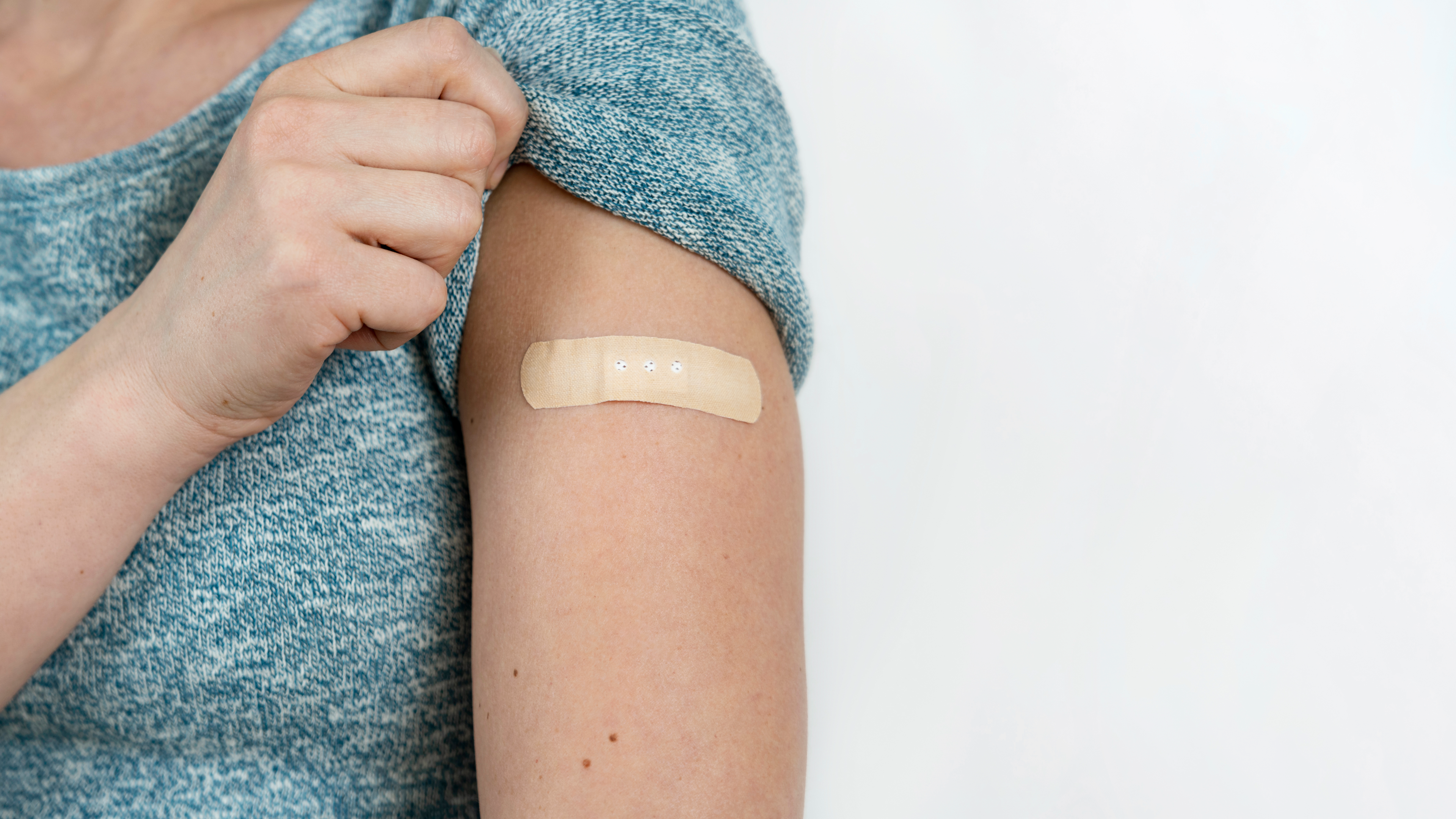Has your dog scratched you during a play session, leaving you worried if it is something serious?
Most of the time, playing with dogs is fun and safe, but sometimes, being a dog owner you might get a scratch that leaves you worried.
In this article, we'll talk about what happens when a dog's nail scratches you, the risks it might bring, and how to take care of it to avoid infection.
So, whether you own a dog or just like being around them, knowing how to handle a scratch can help keep your time with dogs fun and safe.
Risk of Dog Nail Scratches

Dog bites or scratches are very common during playtime. These scratches can happen if your dog steps on you or jumps up on you. While playing fetch or during meal times, your dog can get too excited, and you may end up with a dog bite.
These contain all types of fungi and bacteria that can easily infect humans through open wounds, including tetanus. Your furry friends also lick their paws, taking bacteria from their mouths to their nails. This can in some cases infect humans with Capnocytophaga or MRSA, if the scratch is deeper in the skin.
If a dog scratches you, you might see red marks on your skin that could become painful and swollen.
In some cases, these scratches can lead to more serious health issues. These serious infections include:
- excessive bleeding
- infections from bacteria like Capnocytophaga
- tetanus, caused by the bacterium Clostridium tetani
- rabies, a severe viral infection
- sepsis, a critical condition that occurs when an infection spreads to vital organs
To steer clear of these more serious health risks, let's look at how you can treat a dog scratch and get yourself immediate care.
How to Treat a Dog Scratch?
It's important to treat any dog bites and scratches promptly, even if they appear minor, to avoid infections and other health problems.
Here are the recommended steps:
-
Rinse away
Start by running the scratch site under warm water, using mild soap and water to clean the dog's scratch gently. It's important not to scrub too vigorously, as this can irritate the skin even more.
Allow the water to flow over the scratch for at least 5 minutes to make sure it is thoroughly cleaned.
Afterward, carefully pat the area dry with a clean towel, ensuring there's no moisture left on the skin.
This process helps remove dirt and bacteria from the wound, reducing the risk of infection.
-
Halt the bleeding
If the dog scratch is bleeding, use a clean gauze pad to apply pressure firmly to the open wound. This helps to stop the bleeding and promotes clotting.
Hold the gauze pad firmly in place for several minutes until the bleeding stops.
Avoid removing the pad too soon, as this may disrupt the clotting process and cause the bleeding to start again.
If the bleeding doesn't stop and the puncture wounds you are dealing with are severe, please go to the emergency room ASAP.
-
Apply Ointment

Use an over-the-counter (OTC) antibiotic cream or ointment on the dog's scratch. These products help prevent infection and promote healing.
Apply a thin layer of any antibiotic ointment directly to the cleaned and dried scratch, covering the entire area.
Be sure to follow the instructions on the product's label for how often to apply it and how long to use it. If you have any concerns or if the scratch shows signs of infection despite using the OTC antibiotic, consult a medical professional immediately.
-
Cover the Wound

Place a sterile bandage over the dog scratch after applying the antibiotic cream or ointment. This helps protect the wound from further contamination and keeps it clean while it heals. Make sure the bandage completely covers the scratch and is snug but not too tight.
Change the bandage daily or as instructed by your healthcare provider to make sure proper healing is underway and monitor for any signs of infection, like increased redness, swelling, or discharge.
If the scratch is in an area prone to getting dirty or irritated, consider using a waterproof or extra-durable bandage to provide added protection.
Signs of Infection
As the animal bites or scratch wound heals, be vigilant for signs that may indicate a serious infection is developing:
- If you notice that the area around the scratch becomes more red and swollen instead of improving, it could indicate a serious infection.
- Red streaking extending from the scratch that is not caused by the scratch itself can be a sign that the infection is spreading through the system.
- A fever, especially if it accompanies other symptoms like flu-like symptoms, redness, swelling, or pus, along with increased heat in the body, suggests that your body is fighting an infection.
- Pus is a sign of severe infection and may appear as a yellowish or whitish discharge from the wound.
- Feeling unusually weak or tired can be a systemic response to an infection, particularly if it's accompanied by other symptoms.
If you observe any of these signs during the healing process of a dog scratch, it's crucial to seek treatment promptly.
Getting medical attention can help a doctor evaluate the wound, prescribe antibiotics if necessary, and provide medical care and further guidance to prevent the infection from worsening.
How to Prevent Risks that Comes with Dog Scratches?
To minimize the risk associated with both a dog bite and cat scratch, you can take several preventive measures:
- Wash your hands after interacting with and feeding your dog to reduce the transfer of germs.
- Keep your dog's nails trimmed, and smooth them out to prevent them from scratching you.
- Clean any scratches that do happen carefully to prevent infection.
- Bandage dog scratches and any open wounds ASAP to protect them from further contamination.
- Make sure your dog has had its anti-rabies shot and is up to date on its vaccines to lower the risk of transmitting diseases.
- Avoid contact with unfamiliar or potentially unvaccinated dogs, especially those that appear feral or aggressive.
- Use a leash when walking your dog to prevent encounters with wild animals that could lead to scratches or bites.
- Check with your doctor to ensure you are current on your own vaccinations, which can offer additional protection.
Additionally, if you own a dog, training them to avoid jumping on people and to be gentle with their mouths and paws during play and feeding can help reduce the likelihood of dog bites and scratches.
Final Words
Getting scratched by a dog nail isn't usually a big deal if we take care of it properly. Remember to clean the scratch, use medicine if needed, and look out for any signs of infection. It's also important to make sure our dogs are healthy and well behaved to prevent scratches in the first place.
By following these simple steps and being aware of our dogs' health, we can keep our furry friends and ourselves happy and safe.
So, don't worry too much if you get a scratch from your own dog, though—just seek medical attention, and everything should be okay!
FAQs
Do you need to get a tetanus shot after a dog scratch?
If you haven't had a tetanus shot recently and the scratch breaks your skin, it's important to get a tetanus shot even for minor scratches. Tetanus is a serious bacterial infection that can enter the body through dog scratches.
The tetanus vaccine helps your immune system protect against this infection, so if you're not sure about your vaccination status or it's been a while since your last shot, it's better to err on the side of caution and get vaccinated.
How can I prevent getting dog scratches?
To prevent dog nail scratches, keep nails trimmed, train against jumping, use positive reinforcement for gentle play, supervise interactions, handle dogs properly, and seek professional training if needed.
These measures reduce accidental scratches, ensuring safe and enjoyable interactions with dogs, especially around children or unfamiliar individuals.
Can I contract rabies if my dog scratches me?
While it's possible to get rabies from a scratch, it's rare. The risk depends on various factors, including the household pets' rabies vaccine status and whether rabies is prevalent in your area or if your dog has interacted with a wild dog or rabid dog as they are at the highest risk of carrying rabies.
If you suspect you are dealing with an infected animal, get treated immediately.
How can I prevent rabies transmission from a dog scratch?
Make sure your dog is vaccinated with a rabies shot and avoid contact with stray or unvaccinated dogs.
Promptly clean and treat any dog scratches that cause broken skin to reduce infection risks.




















